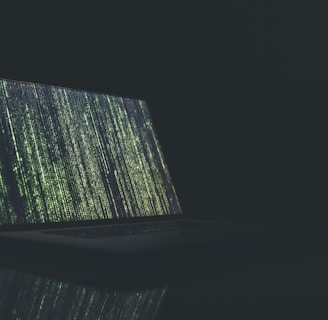Cybersecurity Challenges in an Evolving Technology Landscape: A CISO’s Perspective
Chirag Shah, Ashish Garg
9/15/20244 min read


Introduction
With rapid technological advancements, the digital landscape is constantly evolving, presenting new opportunities and significant challenges for organizations worldwide. One of the most critical challenges is ensuring the security of digital assets. As cyber threats become more frequent and sophisticated, the role of Chief Information Security Officers (CISOs) has become more vital than ever. CISOs are tasked with developing and implementing robust cybersecurity strategies to protect their organizations from cyber-attacks and data breaches. They must remain vigilant and adaptable to keep pace with evolving cyber threats and technological advancements. This article examines the key cybersecurity challenges faced by CISOs and explores strategies to safeguard organizations against these threats.
The Evolving Technology Landscape and Its Impact on Cybersecurity
The digital world is continuously transforming, driven by advancements in technologies such as the Internet of Things (IoT), artificial intelligence (AI), cloud computing, and mobile applications. While these technologies offer numerous benefits, they also introduce new cybersecurity challenges. As technology advances, cybercriminals find increasingly sophisticated ways to exploit vulnerabilities, putting sensitive data and personal information at risk. Both organizations and individuals must adapt to this ever-changing landscape to protect themselves against cyber threats.
Rapid Technological Change and Its Implications
The fast-paced evolution of technology creates a complex environment for CISOs and security leaders. To navigate this evolving landscape, CISOs must adopt a proactive approach to risk management, threat detection, and incident response. Staying informed about emerging technologies and leveraging cloud security services are critical to enhancing an organization's defense capabilities. CISOs must prioritize regulatory compliance and resilience in their cybersecurity strategies to mitigate risks effectively and protect against sophisticated cyber threats like phishing and supply chain attacks.
Adoption of New Technologies by Organizations
Organizations in 2024 are continually adapting to the evolving threat landscape by embracing new technologies. Cloud security and managed detection and response (MDR) services are becoming increasingly popular as companies strive to stay ahead of sophisticated cyber threats. CISOs focus on detection, response, and proactive incident management to mitigate risks and ensure organizational resilience. To achieve this, cybersecurity teams employ advanced AI-powered solutions and generative AI to enhance threat intelligence and provide actionable insights.
Managed Detection and Response services are now a top priority due to the shortage of cybersecurity talent and the need for a proactive approach to risk mitigation. Collaboration with cloud service providers and third-party vendors is essential for developing adaptive security strategies to keep pace with evolving threats. AI models, which continuously learn and adapt to an organization’s risk profile, play a crucial role in this effort.
Impact of New Technologies on Cybersecurity Threats
Advancements in technology are reshaping the cybersecurity landscape. As organizations strive to stay ahead of increasingly sophisticated threats, CISOs must adopt a proactive stance. Emerging technologies like cloud security and MDR are leveraged to enhance threat detection and incident response capabilities. This evolving landscape demands that CISOs navigate complex challenges while ensuring regulatory compliance and robust defenses against cyber-attacks.
The Role of CISOs in Mitigating Cybersecurity Risks
CISOs play a crucial role in mitigating cybersecurity risks in a rapidly evolving threat landscape. They must stay current with technological advancements and evolving cyber threats to ensure their organizations' resilience. By leveraging technologies such as cloud security and MDR, CISOs can detect and respond to sophisticated cyber threats more effectively. A proactive approach to risk management, combined with strong cybersecurity practices, enables CISOs to enhance their incident response capabilities and protect sensitive data.
Key Cybersecurity Challenges Faced by CISOs
CISOs face several key challenges in navigating the evolving threat landscape. These include:
● Increasing Sophistication of Cyber Attacks: The rise of ransomware and advanced persistent threats (APTs) poses significant challenges for CISOs. These sophisticated attacks often exploit network vulnerabilities, leading to severe reputational and financial damage. CISOs must develop proactive strategies to identify and mitigate these threats.
● Growing Regulatory Landscape: The increasing complexity of data protection regulations, such as the General Data Protection Regulation (GDPR) and the California Consumer Privacy Act (CCPA), places additional pressure on CISOs to ensure compliance. Failure to comply with these regulations can result in severe penalties and legal consequences.
● Talent Shortage and Skills Gap: The cybersecurity industry faces a significant talent shortage, making it challenging for organizations to find skilled professionals to defend against evolving threats. CISOs must prioritize training and workforce development to build a resilient cybersecurity team.
● Adapting to Emerging Technologies: As new technologies such as AI, machine learning, and IoT become more prevalent, CISOs must understand their impact on their organization's cybersecurity posture and adapt their strategies accordingly.
● Tightening Budgets and Need to Do More with Less: Security budgets for companies typically come from within IT. Specific business cases for security have become more challenging to quantify due to the fluid nature of cyber-attacks.
Future Outlook and Recommendations for CISOs
The future of cybersecurity will be characterized by continued evolution and complexity. As technology advances, new vulnerabilities will emerge, requiring CISOs to remain vigilant and adaptable. Key strategies for preparing for future challenges include:
● Adopting a Proactive Cybersecurity Approach: Rather than reacting to incidents, CISOs should focus on identifying potential vulnerabilities and implementing preventative measures. This approach may involve conducting regular security assessments, enhancing access controls, and staying informed about emerging threats and best practices.
● Collaborating with External Stakeholders: Building strong partnerships with external stakeholders, including law enforcement agencies, industry peers, and service providers, can enhance threat intelligence sharing and improve response strategies.
● Fostering a Security-Aware Culture: CISOs should prioritize employee training and awareness programs to reduce the risk of human error and insider threats. Empowering employees to recognize and report suspicious activity can significantly strengthen an organization's cybersecurity posture.
● Investing in Advanced Technologies: CISOs should leverage emerging technologies, such as AI and machine learning, to enhance threat detection and response capabilities. Additionally, exploring advanced cryptographic techniques and post-quantum cryptography can help mitigate future risks.
Conclusion
As the technology landscape continues to evolve, CISOs face numerous cybersecurity challenges that require a proactive, adaptive approach. By understanding the complexities of the evolving threat landscape and leveraging advanced technologies, CISOs can develop effective strategies to protect their organizations against cyber threats. Collaboration, communication, and a commitment to continuous improvement are essential for navigating the future of cybersecurity and ensuring the resilience of digital assets.
Key Takeaways
● CISOs must stay informed about the evolving technology landscape and emerging cybersecurity threats.
● Adopting a proactive approach to cybersecurity is essential for mitigating risks and protecting digital assets.
● Collaboration with external stakeholders and fostering a security-aware culture within the organization are critical for building resilience against cyber threats.
● Continued investment in advanced technologies and employee training is necessary to stay ahead of sophisticated cyber attacks.
By adopting these strategies and maintaining a forward-thinking approach, CISOs can effectively navigate the evolving cybersecurity landscape and safeguard their organizations against future threats.
Resources:
https://www.netsecurity.com/top-10-challenges-redefining-the-cisos-role-in-2024/
Expert cybersecurity solutions for your business needs.
Stay in touch
Copyright © 2025 RIGA Cyber. All Rights Reserved


Silicon Valley Roots, Global Impact
HQ: San Francisco Bay Area
Offices: New York, Delhi [India]
